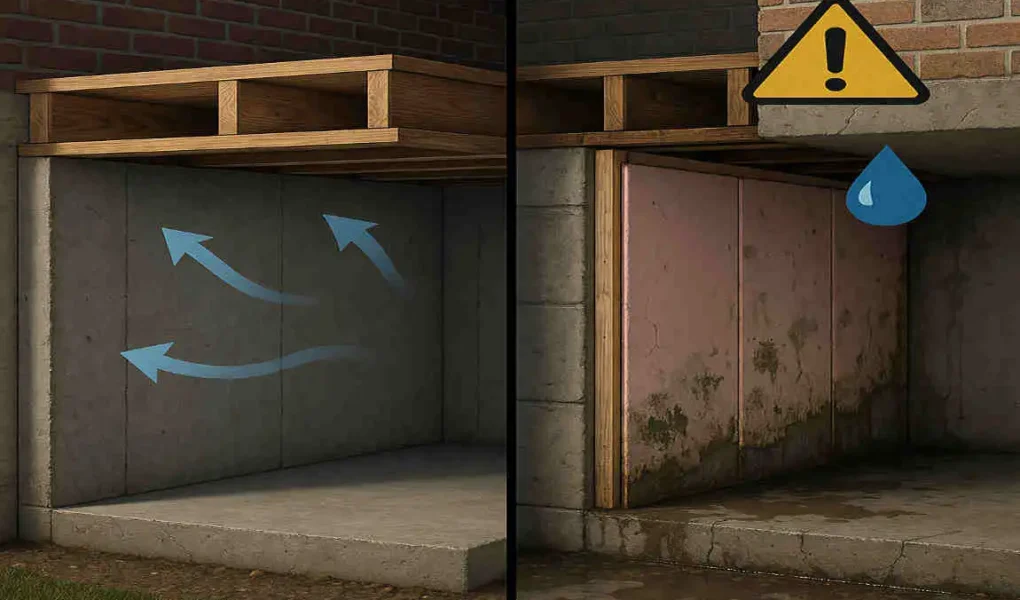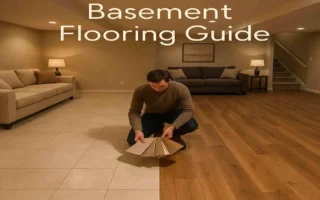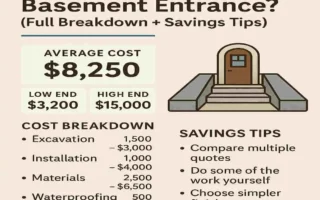Have you ever thought about insulating your basement to make it more comfortable and energy-efficient? It’s a common home improvement project that many homeowners consider. However, before you start adding insulation to your basement walls, there are several important factors to consider.
Understanding Basement Conditions Before Insulation
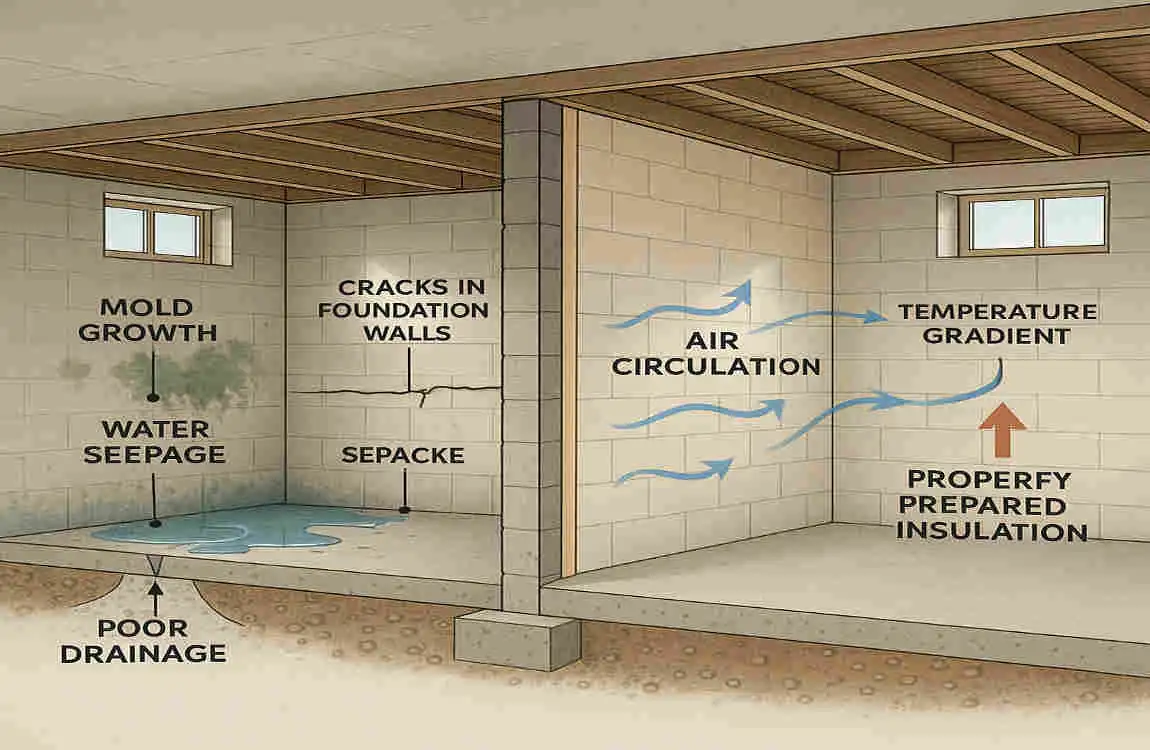
Before we dive into the reasons why you should avoid insulating your basement, let’s take a moment to understand the unique environment of basements.
The Unique Environment of Basements
Basements are different from other rooms in your house because they are located below ground level. This below-grade positioning means that basements are more susceptible to fluctuations in humidity and temperature. The moisture levels in basements can be higher than in other areas of your home, which can lead to a range of problems if not properly managed.
Common Misconceptions About Basement Insulation
Many people believe that insulating their basement is a simple solution to make the space more comfortable and energy-efficient. However, this is not always the case. Basements have unique insulation needs that differ from other rooms in your house. Insulating a basement without considering these factors can lead to more harm than good.
Why Insulation Needs Differ Between Basements and Other Rooms
The primary reason why insulation needs differ between basements and other rooms is the presence of moisture. In a typical room, insulation helps to keep heat in during the winter and out during the summer. However, in a basement, insulation can trap moisture against the walls, leading to a range of problems that we’ll discuss in the next section.
Why You Should Not Insulate Your Basement: Key Reasons
Now that we have a better understanding of the unique environment of basements, let’s explore the key reasons why you should avoid insulating your basement under certain conditions.
Moisture Trapping and Mold Growth
One of the most significant risks associated with insulating a basement is the potential for moisture to be trapped and mold to grow.
How Insulation Can Trap Moisture Against Basement Walls
When you insulate a basement, you create a barrier between the warm, moist air inside the basement and the cold, damp walls. This can cause moisture to condense on the walls and become trapped behind the insulation. Over time, this trapped moisture can lead to a range of problems, including the growth of mold and mildew.
Risk of Mold and Mildew Development and Its Health Impacts
Mold and mildew thrive in damp, dark environments, making basements the perfect breeding ground. When mold and mildew grow in your basement, they can release spores into the air, which can cause a range of health problems, including respiratory issues, allergies, and skin irritation. In some cases, exposure to mold and mildew can even lead to more serious health conditions.
Structural Damage Risks
In addition to the health risks associated with mold and mildew, insulating your basement can also lead to structural damage.
Insulation Trapping Water Leading to Deterioration of Foundation Materials
When moisture becomes trapped behind the insulation in your basement, it can seep into the foundation materials, causing them to deteriorate over time. This can lead to cracks, crumbling, and other forms of structural damage that can compromise the integrity of your home.
Freeze-Thaw Cycles Exacerbated by Incorrect Insulation Causing Cracks
In colder climates, the freeze-thaw cycle can exacerbate the structural damage caused by moisture trapping. When water seeps into the cracks in your foundation and freezes, it expands, causing the cracks to widen. Over time, this can lead to more significant structural issues that can be costly to repair.
Poor Airflow and Ventilation Issues
Another reason to avoid insulating your basement is the potential for poor airflow and ventilation issues.
Basement Ventilation Challenges Worsened by Insulation
Basements are notorious for having poor ventilation, and insulating the walls can exacerbate this problem. When you add insulation to your basement, you create a barrier that can prevent fresh air from circulating and stale air from escaping. This can lead to a buildup of moisture, which can exacerbate the problems we’ve already discussed.
Resulting Stale Air, Moisture Buildup, and Potential for Unseen Damage
When the air in your basement becomes stale and moist, it can create the perfect environment for mold and mildew growth. Additionally, the moisture buildup can lead to unseen damage, such as rotting wood and corroding metal, which can compromise the structural integrity of your home.
Cost Implications of Improper Insulation
Finally, it’s essential to consider the cost implications of insulating your basement improperly.
Repair Costs vs. Savings from Insulation
While insulating your basement may seem like a cost-effective way to improve energy efficiency, the potential repair costs associated with improper insulation can far outweigh any savings you may achieve. If you insulate your basement without addressing the underlying moisture issues, you may end up paying for costly repairs down the line.
Hidden Costs Related to Mold Remediation and Structural Repairs
In addition to the visible repair costs, there may be hidden costs associated with mold remediation and structural repairs. If mold and mildew grow in your basement, you may need to hire a professional to remove them and prevent them from spreading to other areas of your home. Similarly, if the structural integrity of your home is compromised, you may need to pay for expensive repairs to ensure your home remains safe and habitable.
Common Mistakes Made When Insulating Basements
Now that we’ve explored the key reasons why you should avoid insulating your basement, let’s take a look at some common mistakes that homeowners make when attempting to insulate their basements.
- Installing insulation directly onto damp or unsealed walls: One of the most common mistakes homeowners make is installing insulation directly onto wet or unsealed walls. This can lead to moisture trapping and all of the associated problems we’ve discussed.
- Using the wrong type of insulation material for below-grade walls is another common mistake. Not all insulation materials are suitable for use in basements, and using the wrong type can lead to moisture issues and reduced effectiveness.
- Ignoring proper vapor barriers and drainage considerations: Proper vapor barriers and drainage considerations are essential when insulating a basement. Ignoring these factors can lead to moisture buildup and its associated problems.
- Over-insulating without assessing basement moisture issues: Finally, many homeowners make the mistake of over-insulating their basements without first assessing the moisture issues. This can lead to moisture trapping and all of the associated problems we’ve discussed.
When Basement Insulation Might Still Be Appropriate
While we’ve focused on the reasons why you should avoid insulating your basement, there may be situations where insulation is still appropriate.
Signs Your Basement Is Dry and Suitable for Insulation
If your basement is dry and well-ventilated, installing insulation may be a suitable option. Look for signs such as no visible moisture or mold growth, a dehumidifier that’s not constantly running, and a lack of musty odors.
Proper Insulation Types and Methods for Moisture-Resistant Solutions
If you decide to insulate your basement, it’s essential to choose the right type of insulation and installation method. Look for moisture-resistant insulation materials, such as spray foam or rigid foam board, and ensure they are installed correctly to prevent moisture from being trapped.
Importance of Professional Assessment Before Proceeding
Before you start insulating your house basement, it’s always a good idea to have a professional assess the space to ensure it’s properly prepared. A professional can help you identify any underlying moisture issues and recommend the best course of action to ensure your basement remains dry and healthy.
Home Protection Tips to Prevent Moisture and Structural Issues Instead of Insulating
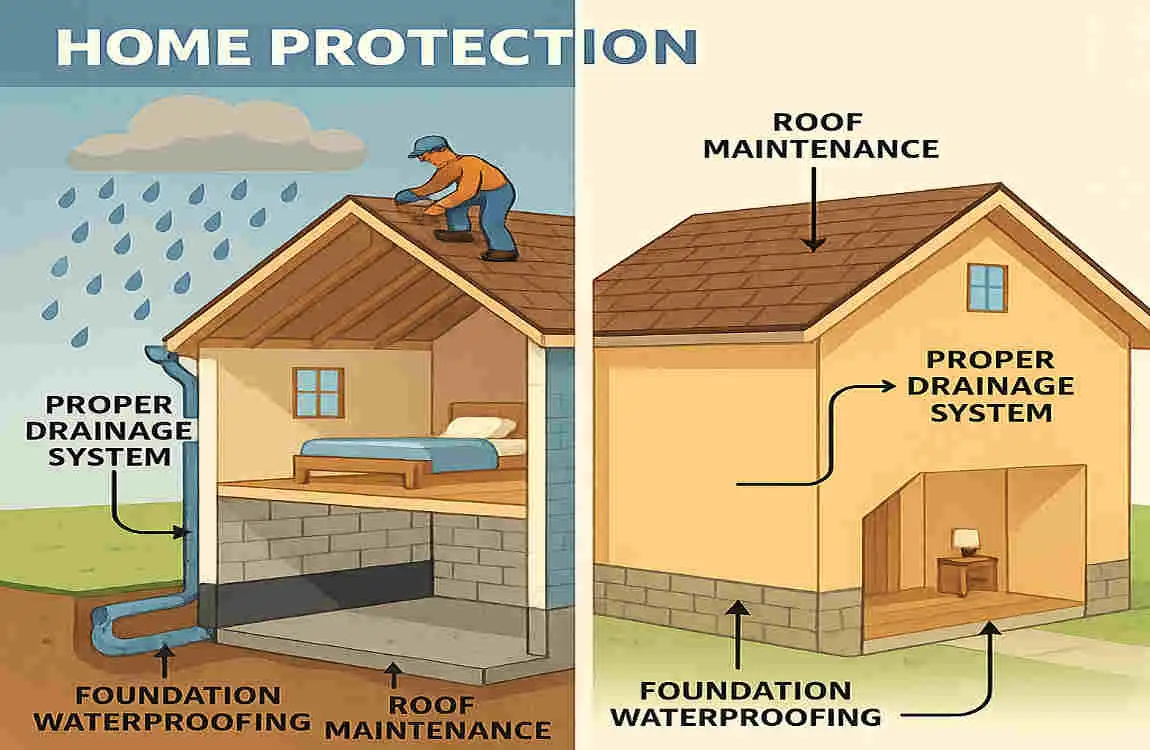
Instead of insulating your basement, consider following these home protection tips to prevent moisture and structural issues.
Moisture Control Strategies
One of the most effective ways to prevent moisture issues in your basement is to implement moisture control strategies.
Exterior Waterproofing and Drainage Improvements
Exterior waterproofing and drainage improvements can help prevent water from seeping into your basement. Consider installing a French drain system or improving the grading around your home to direct water away from the foundation.
Installing Sump Pumps and Dehumidifiers
Sump pumps and dehumidifiers can help to remove excess moisture from your basement. Consider installing a sump pump to remove water that accumulates in the basement, and use a dehumidifier to remove excess moisture from the air.
Proper Grading and Gutter Maintenance to Divert Water
Proper grading and gutter maintenance can also help to prevent water from seeping into your basement. Ensure that the ground around your home slopes away from the foundation, and keep your gutters clean and free of debris to prevent water from overflowing and pooling around the foundation.
Ventilation Improvements
In addition to moisture control strategies, ventilation improvements can also help to prevent moisture issues in your basement.
Increasing Airflow with Vents and Fans Designed for Basements
Increasing airflow in your basement can help prevent moisture buildup. Consider installing vents and fans specifically designed for basements to enhance air circulation and reduce the risk of mold and mildew growth.
Foundation and Wall Maintenance
Regular foundation and wall maintenance can also prevent moisture and structural issues in your basement.
Regular Foundation Inspections for Cracks or Leaks
Regular foundation inspections can help you identify cracks or leaks early on, before they become more significant problems. Look for signs such as cracks in the foundation walls, water stains, or musty odors, and address any issues promptly.
Repairing Any Existing Damage Promptly
If you do find cracks or leaks in your foundation, it’s essential to repair home basement them promptly. Ignoring these issues can lead to more significant problems down the line, such as structural damage and mold growth.
Use of Moisture-Resistant Finishes Instead of Insulation
Finally, instead of insulating your basement, consider using moisture-resistant finishes to protect the walls from moisture.
Paints, Sealants, and Other Barriers Suitable for Basement Walls
Several moisture-resistant finishes are available to help protect your basement walls from moisture damage. Consider using paints, sealants, or other barriers specifically designed for use in basements to prevent moisture from seeping into the walls.
How to Prepare Your Basement if You Decide to Insulate in the Future
If you do decide to insulate your basement in the future, there are several steps you can take to prepare the space and ensure that the insulation is installed correctly.
Steps to Fully Dry and Seal the Basement First
Before you start insulating your basement, it’s essential to fully dry and seal the space. This may involve using dehumidifiers, fans, and other moisture control strategies to remove excess moisture from the air and walls. Once the basement is dry, you can seal any cracks or leaks in the foundation to prevent future moisture issues.
Choosing Breathable Insulation Materials and Appropriate Installation Techniques
When choosing insulation materials for your basement, it’s essential to select breathable options that allow moisture to escape. Look for materials such as spray foam or rigid foam board, which can help to prevent moisture trapping. Additionally, ensure that the insulation is installed correctly, using appropriate techniques to avoid gaps and provide a tight seal.
Importance of Vapor Barriers and Moisture Management Plans
Finally, when insulating your basement, it’s crucial to incorporate vapor barriers and moisture management plans. Vapor barriers can help to prevent moisture from seeping into the walls, while moisture management plans can help you identify and address any moisture issues that arise. By taking these steps, you can help to ensure that your basement remains dry and healthy, even after insulation is installed.

